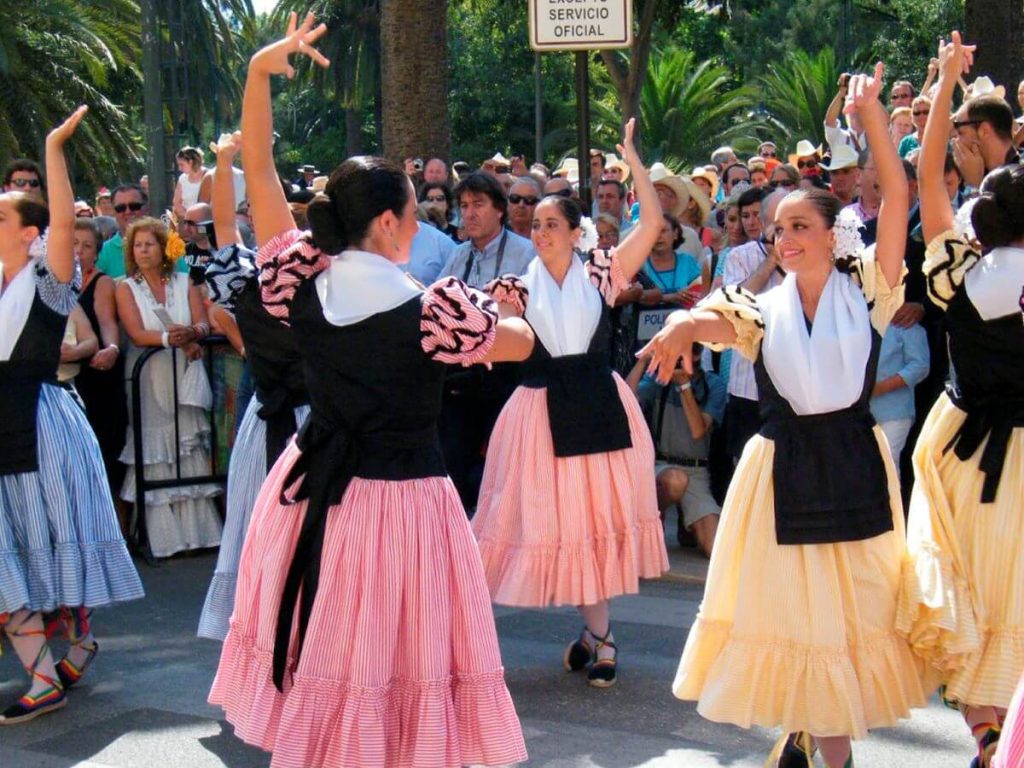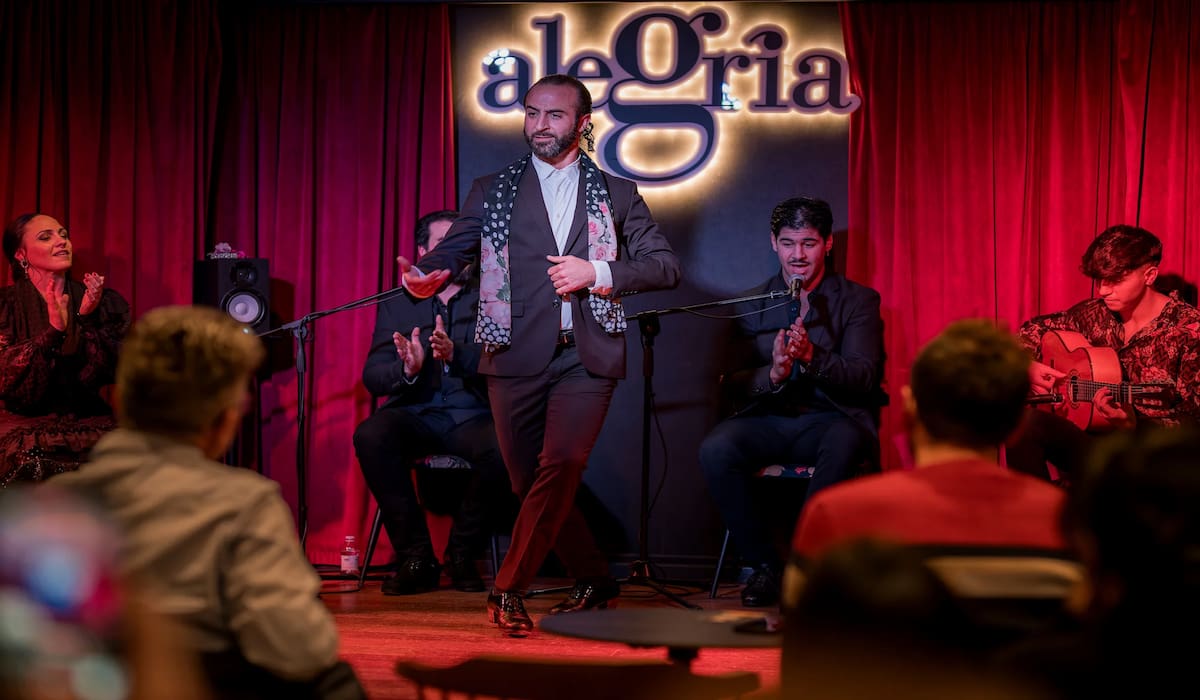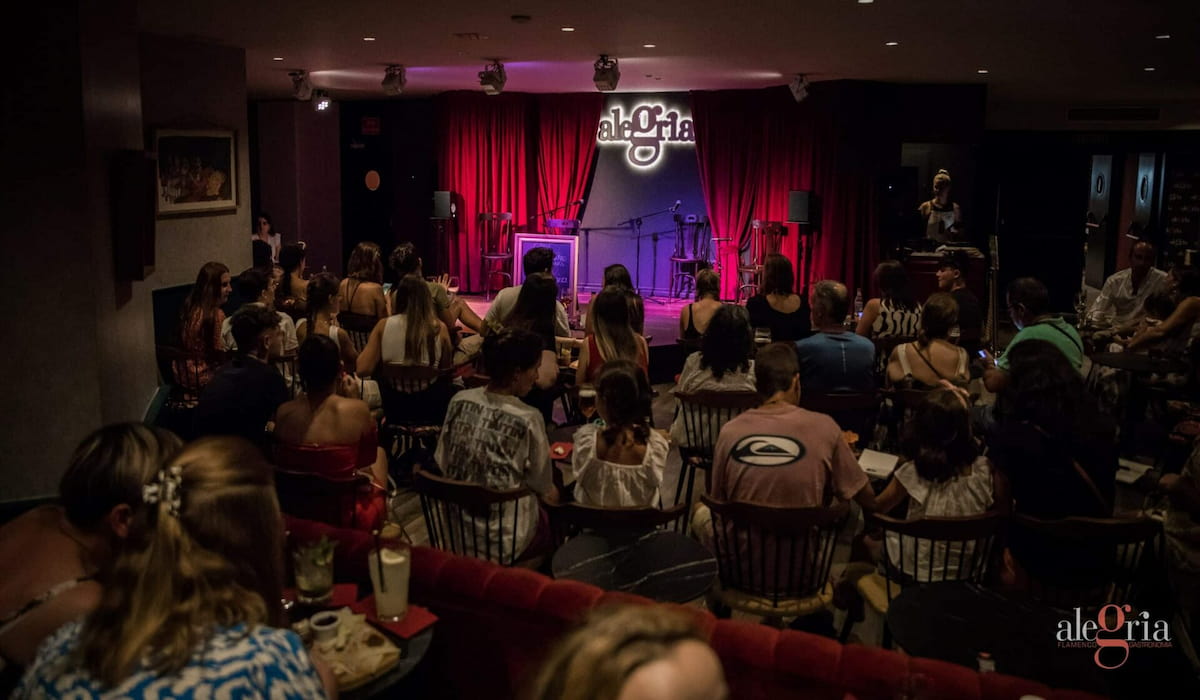The malagueñas as a dance are a traditional flamenco style from Malaga that emerged in the early 19th century and has its roots in the ancient fandangos of the area, differing from these because its rhythm is increasingly slow and sustained, achieving exceptional richness.
What are the Malagueñas?
The typical malagueñas dance from Malaga is a type of musical composition similar to the fandango that is normally danced with the typical costumes of the province such as the malagueña de lujo or bolero, the verdiales and the marenga. Generally, it is danced in couples and some of the steps are the arm movements, the promenade, and the face-to-face movements.
Origin of the Malagueñas
The malagueña dance emerged in the early 19th century in the region of Malaga as a sung dance derived from flamenco. Throughout this century, it continued to be performed throughout Andalusia, gaining great popularity and being highly sought after by the public.
However, there were already some precedents, such as the Tiranas, the Jabera, the Fandango Rondeño and other types of danceable fandangos that accompanied the dances of the Bolero Dance School since the mid-18th century. It is precisely at this time when the Fandango Verdial, mother of the “flamenco malagueñas”, which has multiple variants, emerged.
Cultural and Social Importance
The Spanish Choirs and Dances Association was the one that established the canons that are currently maintained as the foundation of the schematic structure of the malagueña as a dance. A perfectly defined and explained concept that makes dancing malagueñas a graceful piece with beautiful poetic-folkloric content, most often of a costumbrist nature.
One of the main architects of the transformation of malagueñas as a dance is José María Alonso, who in the late 70s and early 80s, created with his work and that of other modern singer-songwriters a canon to follow when composing malagueñas for festive dancing.
Currently, we can find different modalities of malagueñas dance, differentiated in their rhythm and compass, which determines whether they can be danced or not. In the late 90s, they began to be sung respecting the rhythm and compass to make them more danceable, giving rise to the “festive malagueñas”.
How are the Malagueñas Danced?
The malagueña is a flamenco dance that is danced collectively, usually five, six or more couples, where the dancers form circles, tunnels, figures and braids. The music is usually calm and the choreography consists of a circle of couples where the man faces the woman on the left, and both turn their backs to the other couples.
But, how is the malagueña danced? It starts by dancing in the same place for several measures, and when the half turn is indicated, the men turn on the outside of the circle, and the women on the inside, to dance with the opposite couple for another series of measures.
When the leader indicates the full turn, the man turns to the left and advances outside the circle, and at the same time, the woman turns to her left and makes a turn while moving inside, until she is again in front of a new partner. This process is repeated throughout the entire performance.
What Do the Malagueñas Contribute to Flamenco?
The malagueña is a song with a verse of four or five octosyllabic lines, with crossed consonant and assonant rhyme, which normally become six by repetition of the first and third. A song that does not conform to the compass, which in the world of flamenco is known as “free songs”. That is, performed at the will of the interpreter.
Among the predominant themes are those dedicated to love and mothers, so it is common that when seeing them, a climate of respect is imposed where silence prevails. Here are some examples:
On a mother’s grave
A flower never dries,
Because it’s watered by her children
With tears of pain.
Another example would be:
Like the swaying of the waves
rocking each beat
like the swaying of the waves
that little by little approaches
and gently kisses you
you are the bride of the sea
In short, the malagueñas are a dance with their own characteristics. And, although they resemble the verdiales, they are part of a more recent era. A variant of the fandango that you can’t miss the opportunity to see live if you spend a few days in the city of Malaga.




